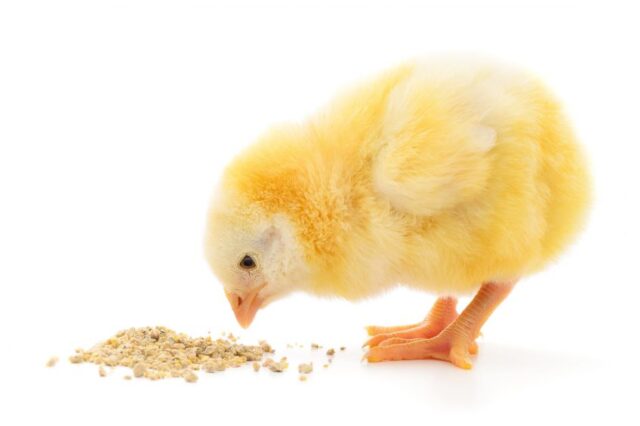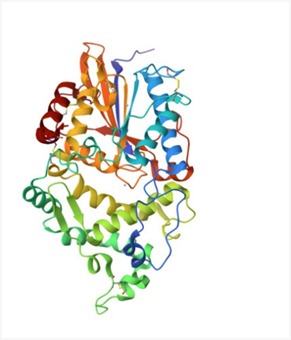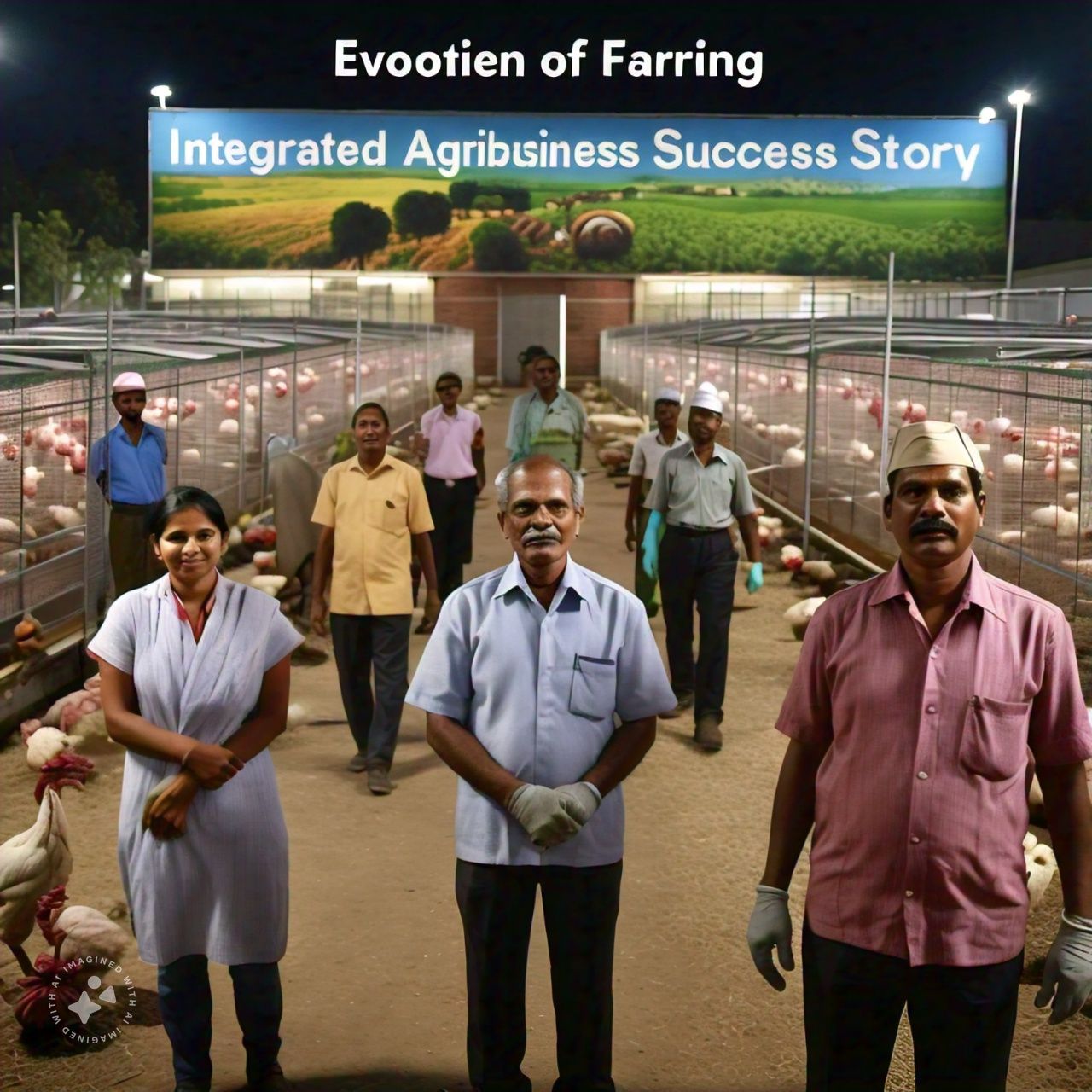
The Role of Phytase in Poultry Diet
Phytase enzymes help poultry utilize phosphorus from grains, reducing economic & environmental impact.
Over fifty percent of the expense in poultry farming is allocated to feed. Ensuring the productivity of poultry birds and the quality of final products like eggs and meat centers on prioritizing feed quality and nutrient availability. Producers strive to deliver high-quality products efficiently and cost-effectively. To economize, producers must optimize animal production sustainably. Poultry birds, known for their rapid growth, require high-quality diets with readily available nutrients. Enzymes serve as a pathway to boost productivity, facilitating increased meat production per bird or, more cost-effective production. Each enzyme possesses distinct traits that influence its inclusion rate in diets, its location within the animal’s gut, and its overall effectiveness. Enzyme are widely used in poultry diets aim to boost nutrient use, support animal well-being, enhance product quality, minimize pollution, and broaden ingredient options. An intriguing aspect of enzyme functionality lies in their specific roles within the animal’s digestive system.
Due to their ability to enhance feed quality, the market for enzymes is growing rapidly. The Feed Enzymes Market is estimated to be $1.38 billion USD in 2024 and is expected to grow to $1.76 billion USD by 2029, with a 5.04% CAGR during the forecast period (2024-2029). Following carbohydrases, phytase is another significant feed enzyme that boosts phosphorus utilization, increases starch, protein, and amino acid availability in animals, and reduces inorganic phosphorus excretion.
Phosphorous (P), Phytate& poultry birds
- Importance of P in poultry:
Phosphorus is vital for poultry growth and development. It helps with metabolism and is part of important compounds like DNA and RNA. Lack of phosphorus can cause poor growth and rickets, and severe deficiency can lead to loss of appetite, weakness, and death. Too much phosphorus can interfere with calcium absorption in the gut.
b) What is the phosphorus-phytate or phytic acid relation?
Poultry diets primarily consist of seed-based ingredients, where most of the phosphorus is present in the poorly digestible form of phytic acid. Due to high costs and pathogen risks in animal proteins, vegetable proteins, which are lower in phosphorus, have become more commonly used. In plant-based feeds, most phosphorus exists as phytates, making up two-thirds of the total phosphorus. Phytic acid, also known as phytate or myo-inositol hexakisphosphate, is the main storage form of phosphorus in plants, accounting for 70-80% in seeds.
Unfortunately, poultry birds poorly digest phytate, which also acts as an anti-nutritional component, creating several major challenges:
- The need to add inorganic phosphorus to the poultry feed. (e.g. DCP & MCP)
- The excretion of a considerable amount of phosphorus in poultry manure.
- The formation of complexes between phytate and other essential nutrients like calcium, zinc, and magnesium, making them unavailable to the birds.
- Increase in endogenous losses of nutrients leads to reduced performance of poultry birds.
This is why poultry diets are supplemented with inorganic phosphorus, such as dicalcium phosphate (DCP) and monocalcium phosphate (MCP), to meet the birds’ phosphorus needs. However, adding inorganic phosphorus not only increases feed costs due to nutrient losses (Starches, proteins, fats and minerals binds with phytic acid), but also adds the expense of purchasing the inorganic phosphorus itself.In addition to this, recently, awareness has increased about reducing phosphorus in poultry manure because it can harm the environment. Runoff from manure can enter water and cause issues like eutrophication.
- Challenges in phytate Phosphorus Utilization
If phytate P is used properly, we can solve the problems mentioned earlier. However, there are some challenges that affect its proper utilization by poultry birds. These challenges are:
- Ca and P concentration in feed
- Amount of dietary vitamin D3
- Birds (Age & species)
- Feed ingredients used & feed processing
High dietary calcium reduces phytate phosphorus utilization by forming insoluble complexes and affecting pH, hindering hydrolysis and nutrient absorption. Vitamin D3 deficiency limits phytate phosphorus utilization, while its supplementation enhances phytase activity and nutrient absorption. Older birds exhibit greater phytate hydrolysis, though this declines with age in layers. Incorporating plant-derived ingredients with known phytase activity can optimize phytate utilization in feed formulation by adding exogenous phytase enzyme.

Phytase: often considered as the 1st enzyme for the poultry feed formulation
Phytase (myo-inositol hexaphosphate phosphohydrolase) is an enzyme that initiates the removal of phosphorus from phytate or phytic acid. Phytase achieves this by hydrolyzing the phosphorylated phytate compound, progressively breaking it down from fully phosphorylated forms like IP6 to less phosphorylated one IP5 or IP4 to IP3. This hydrolysis is important because highly phosphorylated phytate binds more tightly to proteins and minerals in the intestine, reducing their availability for absorption. Conversely, less phosphorylated forms bind less, allowing better nutrient absorption. Since grains are an integral part of poultry feed, animal nutritionists widely use phytase in feed formulations for several benefits:
- To utilize phytate phosphorous efficiently
- Reducing the negative impact of phytic acid on nutrient digestibility
- Improve illeal digestibility performance of Phosphorous, Calcium, Magnesium, Zinc or Sodium in broiler chicken diets
- Allowing a reduction in the amount of inorganic phosphorus (MCP or DCP) in poultry feed
- Decreasing phosphorus excretion in poultry feces, thus reducing environmental impacts
- Lowering feed costs and improvement in FCR
- Enhance broiler body weight gain and performance
- Improve egg production, enhance egg quality and bone mineralization
- Play role in the improvement of immunity enhancement
- Improve digestibility of protein and amino acid and Enhance Apparent Metabolizable Energy (AME)
- Types and sources

Phytase feed enzymes used in commercial poultry feed are classified into two categories based on the site where the hydrolysis of the phytate molecule begins.
- 3-Phytase: releases the P moiety at the C3 position of the myo-inositol hexaphosphate ring.
- 6-Phytase: releases the P moiety at the C6 position of the myo-inositol hexaphosphate ring.
We can also classify phytase enzymes on the basis of their origin into bacterial and fungal phytase.
- Fungal phytase
- 3-phytase: produced from Aspergillus niger
- 6-phytase: produced from Peniophoralycii
- Bacterial phytase
- 6-phytase: E. coli, Citrobacter braakii, or Buttiauxella spp.
Bacteria produce cell-associated phytase, while fungi produce extracellular phytase. Microbial phytase can degrade up to 80% more phytate than endogenous phytase. Bacterial phytases are notable for their resistance to proteolysis, broad substrate specificity, high catalytic efficiency, and extreme heat stability. In contrast, fungal phytases excel in thermostability, activity across a wide pH range, protease resistance in the gut, and high substrate specificity.
Factor’s which affects its effectiveness
- pH: Phytase activity is influenced by pH, with optimal performance in the pH range of 2.5 to 5.5. Studies have revealed that the “phytase from E. coli, or of bacterial origin appear to be more effective than fungal phytase in terms of release of phosphorus per unit of enzyme”.
- Temperature: Phytase being a protein is prone to denaturation due to excess heat of pelleting. However, the enzyme can be stabilized by spray cooling of pellets and nowadays commercially heat stable phytase is also available.
- Pepsin:As phytase is a protein it is bound to proteolytic hydrolysis by protein digesting enzyme, which is pepsin in poultry gut. Studies have proven that bacterial phytase was proteolysis resistant than fungal phytase.
- Feed phytate level:Phytase activity increases in low-phytic acid diets, but high-phytic acid diets release more phosphorus.
- Amount of enzyme used in feed: Need to follow the manufacturer recommendations as given. Matrix valuesprovided by manufacturers will be useful in optimising the dose with feed ingredients added to the formulations.
Conclusion& future perspectives
Supplementation of phytase helps in reducing dependence on expensive inorganic phosphate supplements in poultry production, and it also enhances the digestibility of amino acids, energy, and micronutrients, which eventually leads to improved nutrient utilization, better growth performance, and more generalized sustainability.
Further research will be oriented toward the additional nutritional benefits, improving stability (thermostable & acid stable) & lowering the dose with highly active phytase variant. Apart from this, there is also another possibility to visualize Investigation on genetically modified grains with reduced phytic acid content is another alternative which has a promising scope in reducing phosphorus lost.

Dr. Rahul Mogale, MVsc (Animal Nutrition)
Product Manager, Glamac International Pvt. Ltd


















